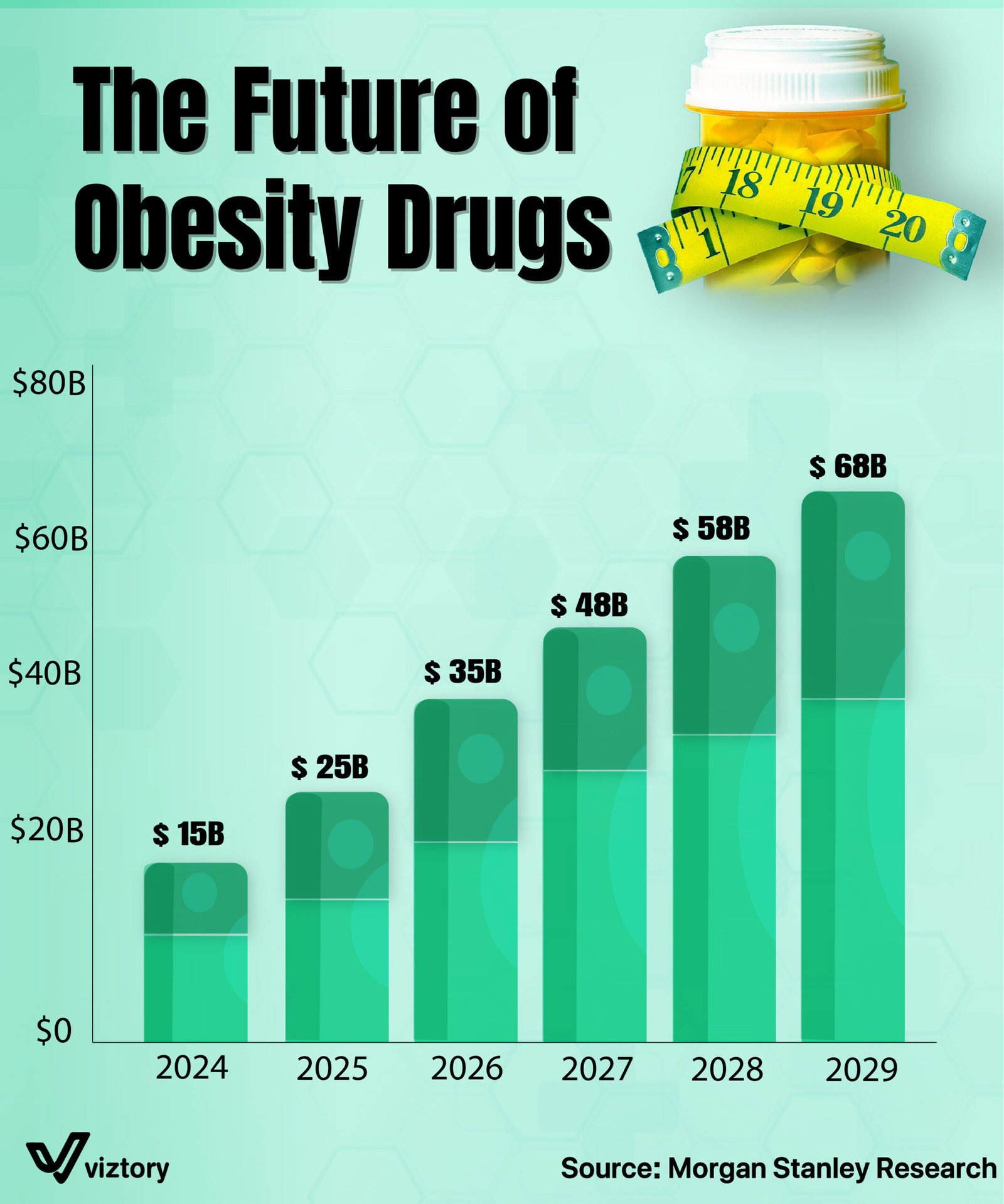The Future of Obesity Drugs
-
Feb, Sat, 2025
The global obesity epidemic has created an urgent demand for effective solutions, and the pharmaceutical industry is responding with groundbreaking obesity drugs. According to Morgan Stanley Research, the market for obesity drugs is projected to grow exponentially, from $15 billion in 2024 to an astonishing $68 billion by 2029. This meteoric rise represents a significant opportunity for healthcare companies and a paradigm shift in marketing strategies for the pharmaceutical sector.
Market Growth and Trends
The obesity drug market is set to quadruple in just five years, reflecting advancements in drug efficacy, increasing public awareness, and a shift in medical perception of obesity as a chronic disease requiring long-term treatment. Key drivers of this growth include:
- Technological Innovation: New-generation drugs, leveraging advanced biotechnology, offer higher efficacy and fewer side effects, making them more attractive to consumers and healthcare providers alike.
- Global Demand: With obesity rates rising across the globe, particularly in developed and emerging markets, the demand for these drugs is reaching unprecedented levels.
- Integration with Digital Health: Companies are increasingly pairing obesity treatments with digital health platforms that track patient progress, ensuring better outcomes and enhancing customer loyalty.
Marketing Strategies in the Obesity Drug Sector
The rapid expansion of the obesity drug market calls for innovative marketing strategies tailored to this unique sector. Key approaches include:
Targeted Campaigns: Using data analytics and AI, pharmaceutical companies can deliver highly targeted advertising to individuals most likely to benefit from these treatments, based on health data, demographics, and behavior.
Educational Initiatives: Marketing efforts now emphasize educating consumers and healthcare professionals about the benefits of obesity drugs, combating stigma, and highlighting the clinical results of long-term weight management.
Collaborations with Influencers and Organizations: Partnering with healthcare influencers, fitness experts, and obesity advocacy groups helps build trust and reach broader audiences.
Value-Based Marketing: Emphasizing the cost savings of obesity drugs compared to the long-term financial burden of obesity-related diseases (e.g., diabetes, heart disease) strengthens the value proposition for payers and consumers.
Challenges and Opportunities
While the growth projections are promising, the obesity drug market faces challenges such as regulatory hurdles, high R&D costs, and potential skepticism from consumers. However, these challenges present opportunities for companies to differentiate themselves through transparency, patient support programs, and affordability initiatives.
Conclusion
The future of obesity drugs is a compelling story of innovation and growth, creating a dynamic landscape for marketers to operate in. By leveraging technology, targeted campaigns, and strategic partnerships, pharmaceutical companies can not only maximize their market share but also play a pivotal role in addressing one of the most pressing health issues of our time. As the market grows to $68 billion by 2029, marketing strategies will be at the forefront of driving this transformation.
Source:
- Morgan Stanley Research

